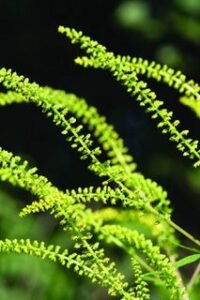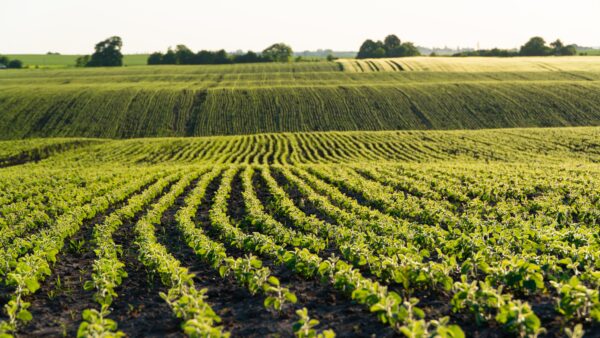Experts weigh in on best practices and the future of herbicide use.
It’s been nearly 80 years since the discovery of 2,4-D — the first modern herbicide. It became commercially available in 1946, and a revolution in agriculture began.
What also began along with it was the problem of herbicide-resistant weeds. Fast-forward to today, and growers are looking for solutions in the battle to fight and manage this problem. In order to be successful in that battle, everyone involved needs to understand that resistance is a problem brought about by humans, say experts.
“Weed resistance is a form of evolution, and it’s induced by our management practices, or lack thereof. Same thing with disease in people — disease is a function of evolution and how we manage our lives,” says Bryan Young, weed science professor at Purdue University.
“Weed resistance to herbicides is a function of how plants evolve in response to our management of them, and most of that management has become increasingly reliant on the use of herbicides.”
Developing resistance is something weeds are very good at. It’s a survival mechanism, and according to Young, weeds evolve in response to many things — not just herbicides.
“You can potentially have evolution of weeds that are less impacted by tillage. Eventually, some species just germinate right away after you till up the last one, and we do already have weeds like that.”
In essence, weed resistance is a result of humans inadvertently selecting for weeds that already have developed a resistance gene to a particular herbicide. Weed resistance begins when weed populations have a very low level of genetic resistance to herbicides. Depending on the weed population, well below one in a million plants, maybe even one in a billion plants, have this genetic resistance to chemical herbicides.
Over time, if one herbicide chemistry is used continuously, the resistant plant will survive and increase the percentage of resistance genes in the overall population, says BASF technical marketing manager Daniel Waldstein.
Waldstein notes that herbicide-resistant weeds were first discovered in the United States in the late 1950s at a pine nursery where triazine herbicides had been used repeatedly. In addition, field bindweed resistant to 2,4-D was reported in Kansas in 1964.
“This explains what we are seeing out in the field now. We need to broaden our view of what we see in weed resistance and look to the horizon in order to see what is coming. Now, more than ever, it’s important to reinforce best practices to manage weed resistance,” Waldstein says.
Waldstein recommends several best practices for managing resistance. Identifying the target weeds is the first.
“We have grown to rely on glyphosate which was extremely effective on many species of weeds when it first came out, so we did not need to be that great of an agronomist or weed scientist to identify the target weeds,” he says. “Now that we have widespread glyphosate resistance in many of our key weed species, we need to understand the chemistries that are available to control weeds so we can develop an effective weed control program.”

Four big weeds that have developed resistance are:
· Horseweed (marestail): found commonly in no-till cropping systems, it was the first weed to develop glyphosate resistance in agronomic crops in the United States, Young notes.
· Palmer amaranth: according to the Weed Science Society of America, Palmer amaranth takes the prize as the most troublesome weed in the U.S.
· Waterhemp: a type of pigweed related to Palmer amaranth, is an annual plant that produces prolific amounts of very small seeds.
· Giant ragweed: can readily be found along fencerows of fields and pastures. Increasingly, it is becoming established in fields. Herbicides commonly used, like glyphosate, provide only partial control.
Layering residual herbicides is a major management strategy Waldstein recommends.
“It is important to start with a pre-emergent herbicide that lays a good residual foundation. Both pre and post applications have become increasingly important in recent years,” he says.
Layering residual pre and post herbicides is especially important for weeds like waterhemp and Palmer amaranth, which continue to emerge throughout the season. It is not uncommon to see clean fields in May and June, but in July and August these weeds seem to appear out of nowhere because of a lack of a good residual weed control program.
Later in the season, Waldstein advises growers make post applications not only with burndown chemistries that kill the aboveground weeds, but also include the residual herbicides to maintain that control.
The growers who use layered herbicides for both pre- and post-residual control have a good weed control program. Group 15 chemistries, for example, provide several weeks of residual control, he says.
Use alternate group numbers, Waldstein also advises. “It is important to understand that two different products might have the same site of action, so there would be no value in mixing the two.”
Using different sites (or modes) of action is key. This can be accomplished with tank mixes, premixes or alternate applications, Waldstein notes. Zidua Pro herbicide is an example of a new soybean pre-emergence herbicide with built in resistance management from three sites of action (Groups 2, 14 and 15). With a product like Zidua PRO, a user does not have to put together an individual chemistry cocktail, but can target multiple sites of action with one premixed product.
Finally, Waldstein advises not to let weeds produce seeds by escaping. “This seems straightforward, but it is not uncommon to see a field with a few large weeds in August. We used to think that getting 90 percent control was not bad. But now, with some of these difficult to control weeds, if we only get 90 percent control, many weeds are escaping and creating problems for the future.”
However, Young reminds growers not to forget the other side of the equation. “We also have to focus on management strategies that are non-herbicide based. To say you’ll manage resistance long-term with just herbicides is counterintuitive. It’s not sustainable,” Young says.
“We have to think about things like row spacing and seeding rates. Tillage can also be of use, when it can be done appropriately and depending on the production system. Proper crop rotations are also key.”
Waiting Game
Another reason to incorporate practices that don’t rely on herbicides is the fact that there aren’t currently enough new sites/modes of action coming to market like there were at one time, Young notes. Growers should develop good management practices along with responsible use of herbicides for this very reason.
“We’re in a major product development drought — the last mode of action brought to market was discovered in the 1980s,” Young says. “The advent and rapid adoption of
glyphosate-resistant crops reduced the need for new herbicide discovery, so we essentially have taken a bit of a vacation from herbicide discovery, in many respects.”
Waldstein echoes that sentiment.
“It’s always a major investment to develop a truly new site of action. However, BASF’s philosophy is to develop and release new products with multiple chemistries and multiple sites of action,” he says.
“I would like to tell all our customers that we will have five or 10 new sites of action coming out in the next few years, but in reality, that’s not the case. This means it’s even more important to steward the effective tools we currently have in our toolbox.”
The key to combating weed resistance isn’t just responsible use of herbicides and adoption of non-herbicide management practices. Education is also key, both experts agree.
“Education is absolutely necessary; a large portion of my time is spent helping users understand how to effectively use different chemistries,” Waldstein says.
Young concurs.
“When we’re adopting new technologies, like dicamba-tolerant crops, we need to be good stewards, which includes making sure we manage against any resistance to dicamba but keeping the herbicide on target.”










